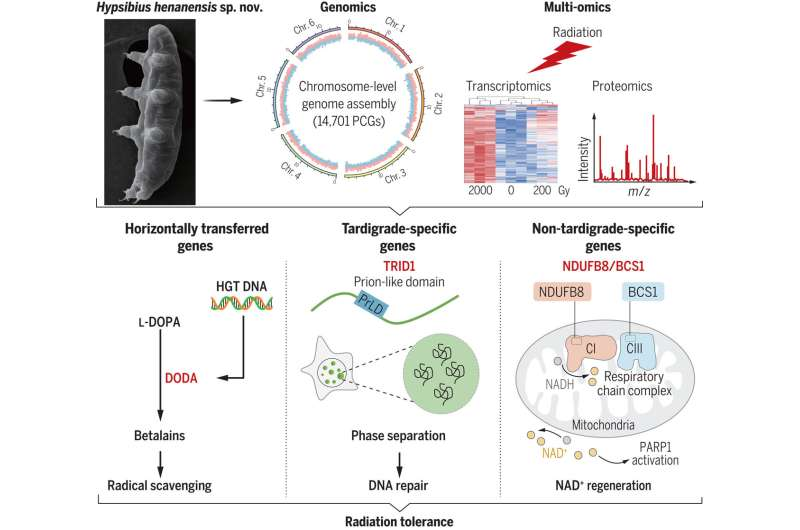New Tardigrade Species Unveils Radiation Survival Mechanisms
Why in the news?
Researchers identified Hypsibius henanensis, a tardigrade with unique radiation resistance, offering insights for potential applications in space exploration, nuclear safety, and cancer therapy advancements.
About the Discovery of a Radiation-Resistant Tardigrade Species:
- Researchers have identified a new tardigrade species, Hypsibius henanensis, that displays extraordinary resilience to high radiation levels.
- Tardigrades, or “water bears,” are known for their ability to survive in harsh conditions, with around 1,300 species documented globally. This new species uses three key mechanisms to endure radiation.
Mechanisms Enabling Radiation Survival:
- Hypsibius henanensis quickly repairs DNA damage with a specialised protein called TRID1, aiding in the repair of double-strand breaks.
- Under radiation exposure, a gene activates, creating two proteins essential for ATP synthesis in mitochondria, possibly assisting in DNA repair.
- Additionally, the species produces multiple antioxidant proteins to neutralise harmful free radicals, protecting cells from damage.
About Tardigrades:
- Known as “water bears” or “moss piglets,” tardigrades are resilient invertebrates from the phylum Tardigrada, with around 1,300 species worldwide.
- Though primarily aquatic, they thrive in varied environments, preferring freshwater mosses and lichens.
Radiation Resistance Mechanisms:
- Hypsibius henanensis repairs DNA double-strand breaks caused by radiation using a unique protein, TRID1.
- Under radiation, a specific gene activates, generating proteins for ATP synthesis in mitochondria, aiding DNA repair.
- Produces antioxidant proteins to neutralise free radicals, protecting cellular integrity.
Significance:
Insights could aid in astronaut radiation protection, nuclear cleanup, and cancer treatment advancements.
Sources Referred:
PIB, The Hindu, Indian Express, Hindustan Times





